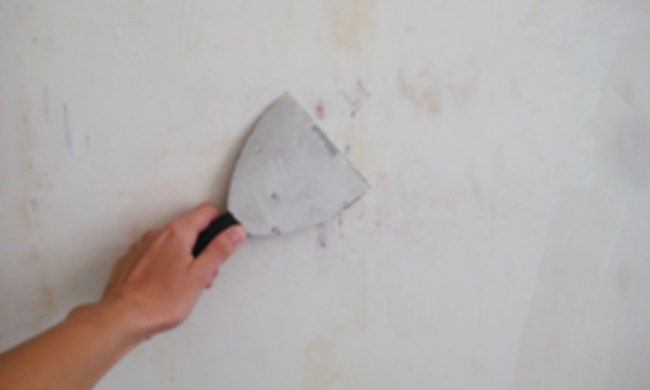Accidents happen, and when they do, it’s not uncommon for paint to find its way onto your carpet. Whether you’re a DIY enthusiast or a professional painter, knowing how to get paint out of carpet can save you time, money, and a lot of frustration. While it might seem like an impossible task, with the right approach, you can effectively remove paint from your carpet and restore its original appearance.
Is paint easy to get out of carpet?

The answer to this question largely depends on the type of paint involved. Some paints are water-based types, making them easier to remove, while others, like oil-based paints, can be more stubborn. Understanding the type of paint on your carpet is the first step in determining the best removal method.
Water-based paint
Water-based paints, including acrylic and latex paints, are the easiest to remove from carpet. Since these paints are soluble in water, they can be lifted out of the carpet with simple household items like dish soap and water. If addressed quickly, water-based paint spills can be cleaned up without leaving any residue behind. However, once dried, latex paint becomes more difficult to remove and may require using a stronger cleaner or a dedicated paint remover.
Oil-based paint
Oil-based paints are trickier to remove from carpet because they aren’t a water-soluble type. These paints require a stronger solvent, like rubbing alcohol or acetone, to break down the paint molecules. Because oil-based paints are more adhesive, they tend to bond more firmly to carpet fibers, making prompt action essential to prevent permanent staining.
What is the best thing to remove paint from carpet?

When it comes to removing paint from carpet, a variety of substances can be effective. The key is to choose the right one for the type of paint and the severity of the stain.
Dish soap
Dish soap mixed with warm water is a gentle yet effective cleaner for water-based and latex paints. Its mild formula helps break down the paint without damaging carpet fibers. This solution works best on fresh paint spills and should be used immediately after the spill occurs.
Vinegar
Vinegar is a versatile household cleaner that, when mixed with cold water, can tackle paint stains, particularly water-based and latex paints. Its acidity helps break down the paint and lift it from the carpet. Vinegar is a more natural cleaning alternative to chemical cleaners and is safe for most carpets.
Rubbing alcohol
A stronger solvent, rubbing alcohol is suitable for removing oil-based paints. Its quick evaporation rate helps prevent the paint from spreading, making it easier to lift from the carpet. However, rubbing alcohol should be used with caution, as it can be abrasive and may discolor some types of carpet.
Glycerin
Glycerin is a mild, nontoxic solvent that is particularly effective at softening dried paint stains. It can be used on both water-based and oil-based paints, and once softened, the paint can be gently scraped off with a blunt tool, such as a butter knife.
Acetone
A powerful solvent often used in paint removers and nail polish removers, acetone is effective at breaking down oil-based and latex paints. However, it should be used cautiously, as it can be very harsh on carpet fibers and may cause discoloration. Always test acetone on a small, inconspicuous area of the carpet first to ensure it won’t cause damage.
How to get paint out of carpet when it’s still wet

Acting quickly can make all the difference if you’ve just spilled paint on your carpet. Here’s a step-by-step guide on how to remove wet paint from your carpet:
- Blot the paint: Use a clean cloth or a paper towel to blot up as much of the wet paint as possible. Be careful not to rub, as this can push the paint deeper into the carpet fibers.
- Apply the cleaning solution: Depending on the type of paint, choose an appropriate cleaner (dish soap for water-based paint, rubbing alcohol for oil-based paint, or vinegar for latex paint). Mix the cleaner with warm water and apply it to the stain.
- Blot and rinse: Continue to blot the paint stain with the cleaning solution, working from the outside of the stain toward the center. Rinse the area with clean water and blot again to remove any remaining paint and cleaner.
- Dry the carpet: Once the paint is removed, use a dry cloth or paper towels to blot the area and remove excess moisture. Allow the carpet to air dry completely.
How do you get dried paint out of carpet?

Removing dried paint from carpet is more challenging, but it’s not impossible. Here’s how to tackle dried paint stains:
- Scrape off excess paint: Use a blunt tool, such as a butter knife, to gently scrape off as much dried paint as possible.
- Soften the paint: Apply a solvent like glycerin or acetone to the dried paint stain and let it sit for several minutes to soften the paint.
- Blot and lift the paint: Once the paint is softened, use a clean cloth to blot and lift the paint from the carpet. You may need to repeat this process several times to completely remove the stain.
- Rinse and dry: After the paint is removed, rinse the area with clean water and blot dry with a cloth. Allow the carpet to air dry completely.
Knowing how to get paint out of carpet is an essential skill for anyone who values a clean and well-maintained home. Whether you’re dealing with a fresh spill or a dried mess, the right approach can make all the difference. With a little effort and patience, your carpet can be paint-free and beautiful once again.




